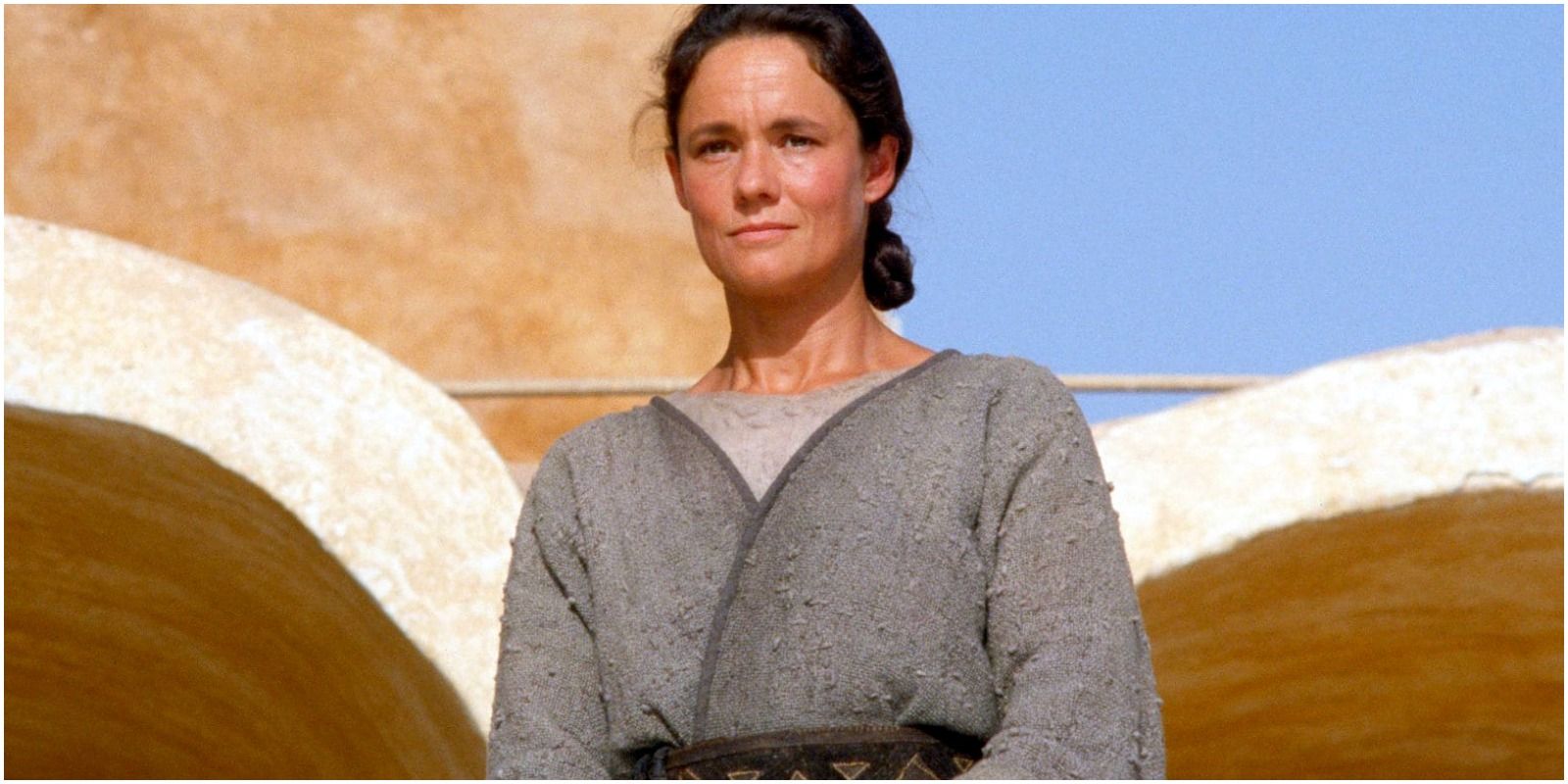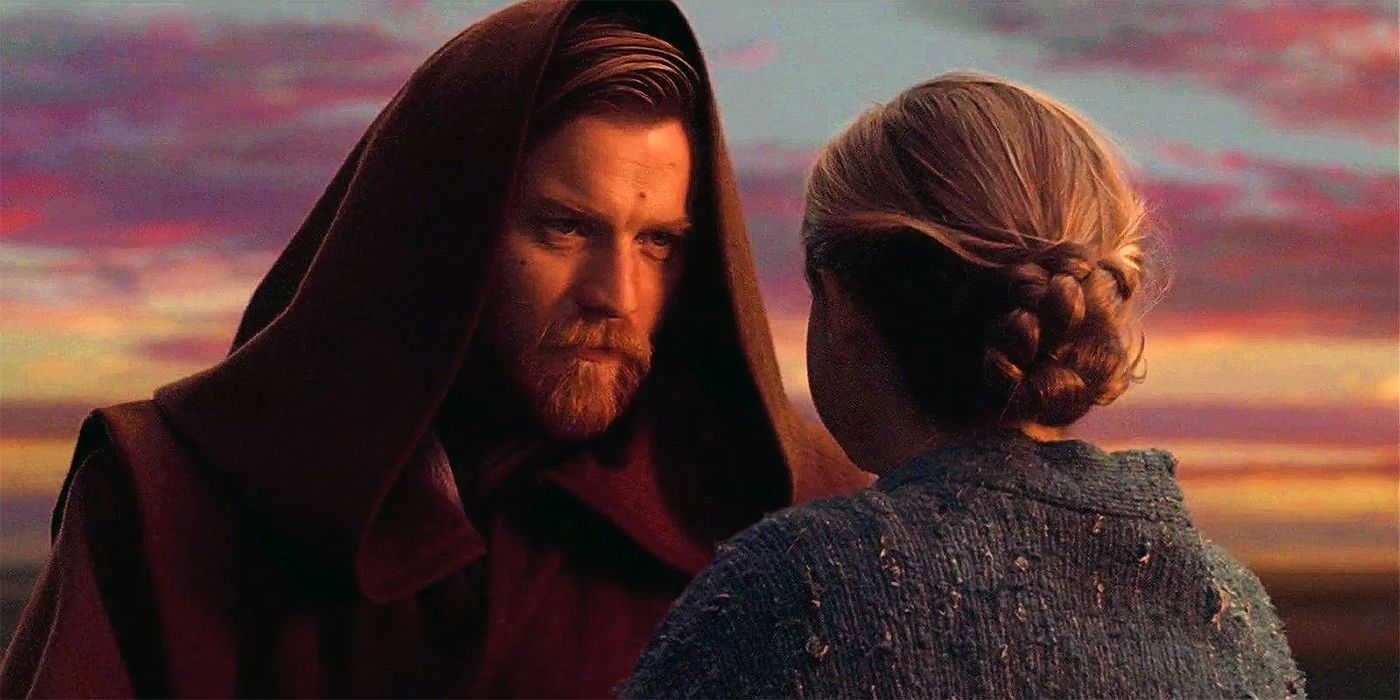The following contains spoilers for the novel Queen's Hope by E.K. Johnston, which hit shelves on April 5, 2022.
While Star Wars' most famous revolutionary movement is the Rebellion, there have been many other resistance movements throughout the galaxy, some of which overlapped with the Rebellion era. In E. K. Johnston’s trilogy focused on Padmé Amidala, a recurring subplot has been Padmé and her handmaiden Sabé’s efforts to help end the slave trade on Tatooine, both overtly and covertly. The subplot in Johnston’s Queen’s Hope focuses more on Sabé and Captain Tonra’s efforts to join the grassroots movement on the planet to end slavery. This movement, later revealed to be known as the White Sun, has ties to Beru Whitesun Lars and could factor into the upcoming Obi-Wan Kenobi series.
Interludes throughout Queen's Hope show Shmi Skywalker, Cliegg Lars and Beru Whitesun's involvement in efforts on Tatooine to end slavery. One of the major obstacles the group faces is the tracking chips embedded in all slaves on the planet that could be detonated if they tried to escape. While serving with the group, Shmi created a tracking device that could find these chips, enabling members of the group to quickly remove them to help slaves escape.
In the present timeline of the novel, Sabé and Tonra worked with Rabé, another of Padmé's former handmaidens, to help improve the tracking device and make sure the design could be replicated using simple parts. In doing so, Sabé and Tonra achieved their goal of joining Tatooine's resistance. At the end of the novel, Johnston reveals that the grassroots rebellion was called the White Sun, possibly named after Beru’s family or even Beru herself.
On the surface, the reveal of Beru's revolutionary past may seem to contradict other information and stories about Beru. For example, in Meg Cabot’s “Beru Whitesun Lars” in Star Wars: From a Certain Point of View, Beru tells her tale to the reader after her death, and she characterizes herself as a simple moisture farmer, chef and parent. However, it was a story where Beru was specifically addressing the reader, and she could have been an unreliable narrator. Also, Beru's interlude in Queen's Hope ended with her bowing out of the technical side of the movement and instead taking on a more nurturing role. Thus, there is room for Beru to take a more active role as a revolutionary in future Star Wars projects, including the upcoming Obi-Wan Kenobi television series.
While the White Sun movement on Tatooine began long before the Empire's rise, they still may have been active during the Imperial era. Since Obi-Wan Kenobi will take place partially on Tatooine, the series may also show the White Sun and their continued efforts to oppose oppression. While Beru was not featured in the teaser trailer, she could still be a member of the group that bears her maiden name. Alternatively, she and her husband Owen Lars may have cut ties with the group because they were more focused on keeping Luke Skywalker safe from the Empire and from his father Darth Vader. Even if Beru and Owen are no longer involved in the movement, the White Sun could still play a key role in the series as the people of Tatooine struggle to survive the Emperor's reign.
The reveal of the White Sun activist group shows that while Tatooine has its dark side, there have always been people on the planet fighting to make Tatooine a better place. Also, while Beru and Owen Lars sheltered Luke Skywalker from the Empire, they may have been revolutionaries in their own right in the past. In the upcoming Obi-Wan Kenobi series, the White Sun resistance group may play a larger role in Tatooine’s politics during the Imperial Occupation and show that other rebellions still fought against the Empire.



